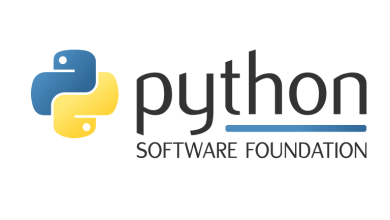Using locust for load testing

Quickstart guide for doing web application load testing with the Python powered locust library.
[Locust](https://locust.io/) is a Python library that makes it relatively straightforward to write Python tests. This heavily commented code example explains each section of code. To use locust:
1. Install locust: `pip install locust`
2. Copy the file below into the directory where you want to run locust
3. In that directory, at the command-line, type: `locust`
4. Open [http://localhost:8089/](localhost:8089)
“`python
# locustfile.py
# For more options read the following
# https://docs.locust.io/en/stable/writing-a-locustfile.html
# Import Locust basics
from locust import HttpUser, task, between
# Imports for generating content
from string import ascii_letters
from random import randint, shuffle
def namer():
“Create a random string of letters under 10 characters long”
ascii_list = list(ascii_letters)
shuffle(ascii_list)
return ”.join(ascii_list[:10])
class CatsiteUser(HttpUser):
“””
This class represents simulated users interacting with
a website.
“””
# how long between clicks a user should take
wait_time = between(2, 5)
# The default host of the target client. This can be changed
# at any time
host = ‘http://localhost:5001/’
def on_start(self):
# Methods with the on_start name will be called for each
# simulated user when they start. Useful for logins and
# other ‘do before doing other things’.
pass
def on_stop(self):
# Methods with the on_stop name will be called for each
# simulated user when they stop. Useful for logouts and
# possibly data cleanup.
pass
# TASKS!
# Methods marked with the `@task` decorator is an action
# taken by a user This example focuses on changes to a
# database, but provides a foundation for creating tests on
# a more read-focused site
@task
def index(self):
# User goes to the root of the project
self.client.get(‘/’)
@task
def create(self):
# User posts a create form with the fields ‘name’
# and ‘age’
self.client.post(‘/create’, dict(name=namer(), age=randint(1,35)))
@task
def update(self):
# User posts an update form with the fields ‘name’
# and ‘age'”
with self.client.get(‘/random’) as resp:
pk = resp.text
form_data = dict(id=pk, name=namer(), age=randint(1,35))
self.client.post(f’/{pk}/update’)
@task
def delete(self):
# Represents the user getting a random ID and then
# going to the delete page for it.
with self.client.get(‘/random’) as resp:
pk = resp.text
self.client.get(f’/{pk}/delete’)
“`
## Sample test site
For reference, this is the test site used to create the above locustfile. I’ll admit that the above test is incomplete, a lot more tasks could be added to hit web routes. To use it:
1. Install FastHTML: `pip install python-fasthtml`
2. Copy the file into the directory you want to run it
3. In that directory, at the command-line, type: `python cats.py`
4. Open [http://localhost:5001/](localhost:5001)
“`python
# cats.py
from fasthtml.common import *
# Set up the database and table
db = database(‘cats.db’)
class Cat: name:str; age:int; id:int
cats = db.create(Cat, pk=’id’, transform=True)
# Instantiate FastHTML app and route handler
app, rt = fast_app()
def mk_form(target: str):
return Form(
P(A(‘Home’, href=index)),
Fieldset(
Input(name=’name’),
Input(name=’age’, type=’number’),
),
Input(type=’submit’, value=’submit’),
hx_post=target, hx_swap=”outerHTML”
)
def cat_count():
query = “””select count(id) from cat;”””
result = db.execute(query)
return result.fetchone()[0]
@rt
def index():
return Titled(‘Cats’,
P(
A(‘Create cat’, href=’/create’), NotStr(‘ ‘),
A(‘Random ID’, href=random)),
P(f’Number of cats: {cat_count()}’),
Ol(
*[Li(A(f'{d.name}:{d.age}’, href=f’/{d.id}’)) for d in cats()]
)
)
@rt
def random():
# Small dataset, we can get away with using the RANDOM() function
query = “””SELECT id FROM cat ORDER BY RANDOM() LIMIT 1;”””
result = db.execute(query)
return result.fetchone()[0]
@rt(‘/create’)
def get():
return Titled(‘Create Cat’,
mk_form(‘/create’)
)
@rt(‘/create’)
def post(cat: Cat):
cat = cats.insert(Cat(name=cat.name, age=cat.age))
return RedirectResponse(url=f’/{cat.id}’)
@rt(‘/{id}’)
def cat(id: int):
cat = catshttps://daniel.feldroy.com/posts/2024-11-using-locust-for-load-testing
return Titled(cat.name,
P(cat.age),
P(A(‘update’, href=f’/{id}/update’)),
P(A(‘delete’, href=f’/{id}/delete’)),
)
@rt(‘/{id}/update’)
def get(id: int):
cat = catshttps://daniel.feldroy.com/posts/2024-11-using-locust-for-load-testing
return Titled(‘Edit Cat’,
fill_form(mk_form(f’/{cat.id}/update’), cat)
)
@rt(‘/{id}/update’)
def post(cat: Cat, id: int):
if id not in cats:
return RedirectResponse(url=index)
cat.id = id
db.begin()
try:
cats.update(cat)
db.commit()
except:
db.rollback()
return RedirectResponse(url=f’/{cat.id}’)
@rt(‘/{id}/delete’)
def cat(id: int):
if id not in cats:
RedirectResponse(url=index)
# db.begin()
cats.delete(id)
# db.commit()
return RedirectResponse(url=index)
serve()
“`
Tags: python howto load testing
← Back to all articles




